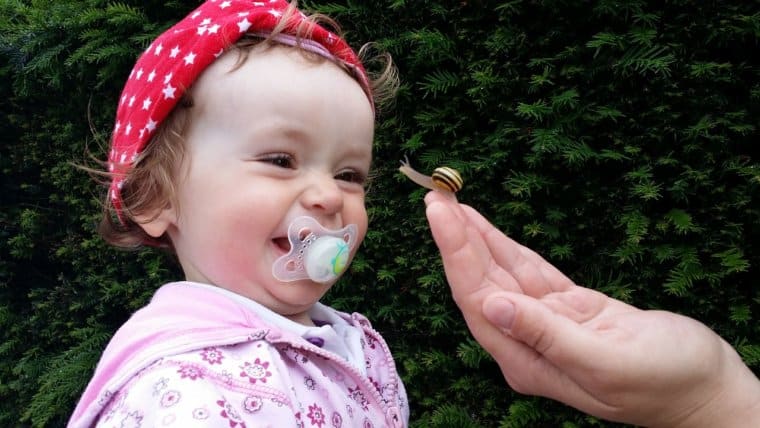 Although we parents might feel like we spend every moment with a new baby, our days are also filled with the work it takes to run a family. There is laundry to be done, meals to prepare, diapers to change, showers to slip into when we have a moment, and errands to run when we can. And so we get busy around our babies. Even when we’re with our babies hour after hour, sometimes 3:00 p.m. rolls around and we haven’t actually connected with them yet.
Although we parents might feel like we spend every moment with a new baby, our days are also filled with the work it takes to run a family. There is laundry to be done, meals to prepare, diapers to change, showers to slip into when we have a moment, and errands to run when we can. And so we get busy around our babies. Even when we’re with our babies hour after hour, sometimes 3:00 p.m. rolls around and we haven’t actually connected with them yet.
What’s one solution? Special Time!
During Special Time you can set aside a small chunk of time to be with your baby without any other distractions. It’s a time you can show your baby how happy you are that he is here. It gives you time to get to know who he is. For little ones who have had a rough entry into the world, it can be an important source of connection and healing. And Special Time can enhance the development of a baby’s growing brain.
In the first few years of life a baby’s brain is busy building a complex wiring system. Recent advances in brain research have shown that an infant’s environment has a dramatic affect on brain development, or how well his brain wires, resulting in how well he thinks and learns—even into adulthood.
A baby’s surroundings can actually enhance the number of electrical connections that are formed in his brain. A loving connection with a baby, including responsive attention, affection, eye contact, and warm, gentle communication is a great way to encourage the formation of brain circuitry in a baby. That’s where Special Time comes in!
In Special Time, you put away the phone, set aside any chores that need to be done, and make sure that siblings are cared for so there aren’t any interruptions.
What does Special Time with a baby look like? Here are seven steps to follow as you do Special Time with your baby:
#1. Before you start, make sure your baby is fed, changed, and awake. In other words, make sure his physical needs are met before you begin.
#2. Set a timer, if you’d like, for five, ten, or fifteen minutes. This can help you stay focused.
#3. Then, hold your baby close or prop him against your knees.
#4. Catch his gaze and let him know you’re all his and you won’t be distracted.
#5. Make eye contact and notice what he does—the sounds he makes, where he looks, and how he moves his body.
#6. Here are a few suggestions of what to say during this time together:
“I’m so glad to be with you.”
“Welcome! You made it.”
“I’m all yours.”
“I have ten minutes just for you.”
#7. As you talk to your baby in a warm, soft, tone notice how he responds. Have a “conversation” with him, a conversation in which you talk a little and listen a lot.
Babies have literal thoughts that they want to express. Sometimes your baby will “talk” to you with his sounds, smiles, and expressions. Listen closely, with warmth and admiration. If your little one looks away, move gently to meet his gaze again, and remind him that you are there. If he starts to cry, though you’ve just fed and changed him, and you think you’ve met his physical needs, listen to his upset. He might be telling you about a difficult birth, relieving stress about a tense conversation he overheard, or healing from the disconnection he felt when you were on the phone or stepped away for a while.
If he’s experiencing gas pain or other physical discomfort, you might change his position a bit, but continue to listen to him, so he’s not alone while he works things through. You can gently remind him that you are there and you’ll be with him while things feel hard.
Special Time will help you to attune to your baby’s mind and emotions; you’ll become familiar with his signals and have the chance to respond in a warm, unhurried, and caring way. It’s this back and forth communication, also known as contingent communication, that shapes the architecture of a child’s brain. And this is how your baby receives your caring. You pour your attention in, and if he can’t incorporate it fully, he’ll cry away the tension until your love falls into its rightful place inside him.
When you carve out a few minutes each day for Special Time with your baby, you’re taking an important opportunity to stimulate your baby’s brain, heal the hurts that may have settled in, and connect in a wonderful way.
Special Time is one of Hand in Hand's five Listening Tools. You can learn more about the others in this free guide: 5 Revolutionary Ideas That Make Parenting Less Stressful
 Julie Johnson, is a been-there-experienced-that mom, a Certified Hand in Hand Parenting Instructor and a researcher with 20 years of experience. She is also a teacher with a master’s degree in education. Connect with Julie and find out more about her upcoming Mom and Baby groups.
Julie Johnson, is a been-there-experienced-that mom, a Certified Hand in Hand Parenting Instructor and a researcher with 20 years of experience. She is also a teacher with a master’s degree in education. Connect with Julie and find out more about her upcoming Mom and Baby groups.
Save
Save
Save
Save
Save

